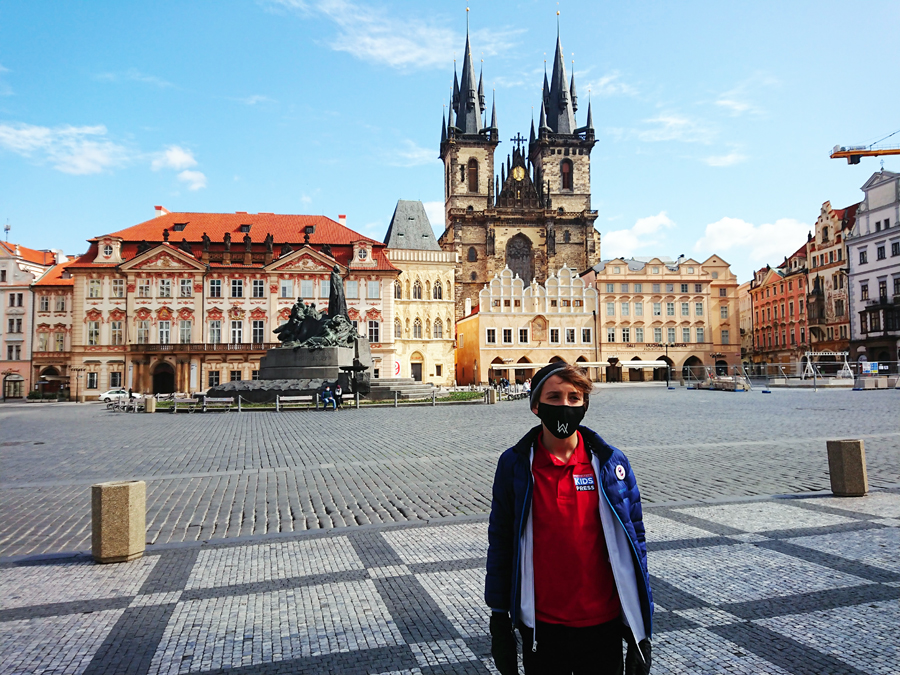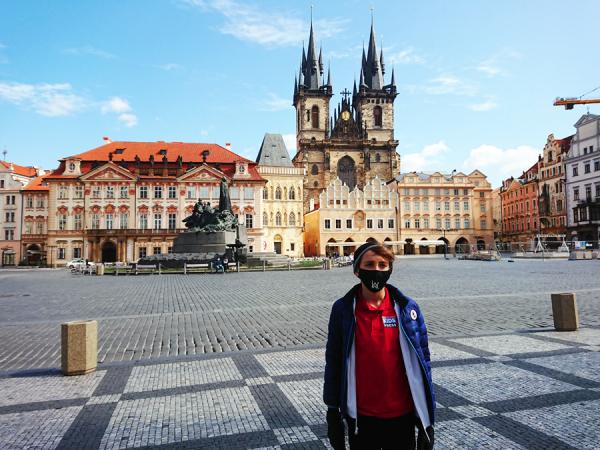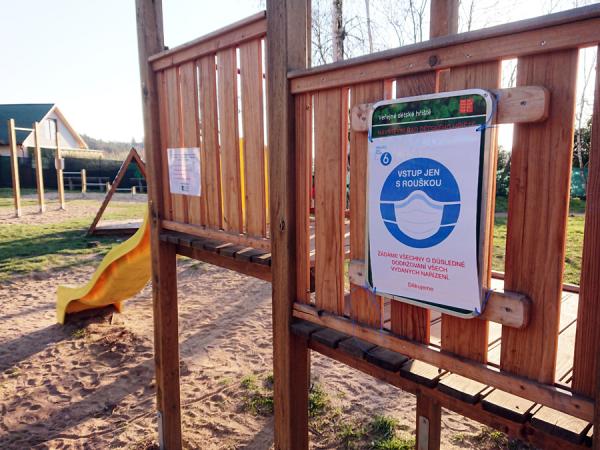KID REPORTERS’ NOTEBOOK
Eyewitness: Coping With the Pandemic in the Czech Republic


Rade crosses the empty Old Town Square in Prague on his way to the bakery.
Editor’s note: During the coronavirus pandemic, our 50 Kid Reporters around the world are covering the news from home. We’ll be sharing their individual experiences on our Kids Press blog in the weeks ahead. Stay safe!
The center of Prague, the capital and largest city of the Czech Republic, is a ghost town. The streets of the Old Town, usually filled with tourists from around the world, are draped in an eerie silence. Such landmarks as Charles Bridge and Prague Castle, which was built in the ninth century, are deserted.
One feels a certain nervousness walking down the street amid the novel coronavirus pandemic. Each person in this European city meticulously avoids passersby, touching nothing.
But we must remind ourselves in this time of crisis that behind every mask is a human face. We are all in this together. As many people are saying about social distancing, staying at home, and wearing masks: “I do this for you; you do this for me.”

Signs at a playground in the Czech Republic remind children to wear masks to limit the spreading of germs.
DRASTIC CHANGES
In the Czech Republic, the first three cases of COVID-19, the respiratory disease caused by the novel coronavirus, were detected on March 1. The country braced for an outbreak of infections, especially since many Czechs had been skiing in Italy in late February, where the outbreak has been severe. As of April 1, more than 3,500 cases have been confirmed here; 39 people have died.
Since the beginning of March, life in the Czech Republic has changed drastically—in parallel with the exponential number of cases around the world. All establishments, except those selling essential goods, are closed. Schools temporarily shut down on March 11.
Other than trips to the grocery store or drug store, people are only allowed out for physical exercise. Land borders are closed, and flights have been suspended for all but Czech citizens returning home.
WEARING MASKS
On March 18, the Czech Republic became the first country outside Asia to require everyone to wear a mask when they go outside. Most people have complied. Although the fine of 20,000 crowns ($795) played its part in deterring violations, the campaign largely owes its success to the public’s willingness to cooperate.
Many people have sewn homemade masks for their friends and family out of old clothes, and influencers have promoted the cause on social media with the hashtag #Drzmespolu (We Stand Together).
It’s too early to determine the full effect of wearing masks outdoors. But many doctors believe that rates of infection will be significantly “flattened,” or slowed, by this nationwide compliance.
AFFORDABLE VENTILATORS
The organizers of an online project to raise money to quickly develop inexpensive ventilators—vital breathing machines that would save hundreds of lives—were astonished by their success. They raised 12 million crowns ($480,000) in a single day. More than 7,000 people have contributed.
The ventilators will cost a third of the standard price. Researchers will publish their blueprints so that many other lives around the world can be saved. The first of these ventilators will be produced within days.
As is often said now, “We are all in this together.”
